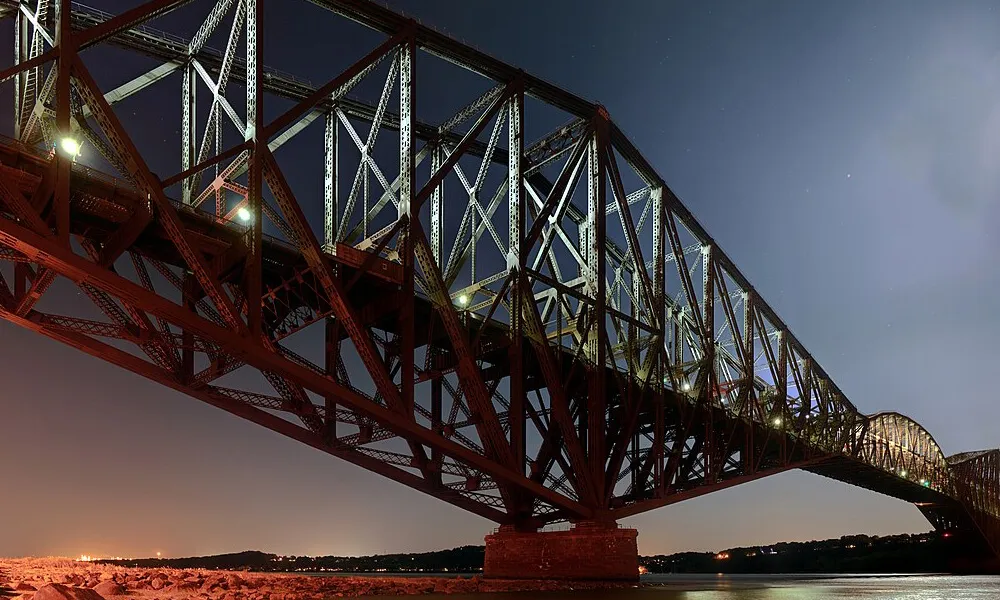
OTTAWA, Ontario – The Canadian government will once again own the landmark Québec Bridge over the St. Lawrence River after negotiations with Canadian National, Prime Minister Justin Trudeau announced today.
“The Québec Bridge is a source of pride for the people of Quebec City and all Canadians. It is a timeless symbol of what is possible when we work hard together, and today’s repatriation agreement with CN will ensure that it is protected and restored for future generations,” Trudeau said in a statement.
The Québec Bridge is a major road, rail, and pedestrian bridge linking Quebec City and Lévis, Quebec. Built in 1917, it was designed to boost economic development and connect Quebec City to the Canadian and American rail networks. Considered one of Canada’s architectural gems, it is recognized as a symbol of engineering excellence and was designated a National Historic Site of Canada in 1995.
The bridge is a critical regional transportation link and an important element of the Canadian supply chain, allowing passengers and goods to move freely across the St. Lawrence River and to other destinations in Canada and North America. The span carries CN freight trains, VIA Rail passenger trains, and more than 33,000 vehicles daily.
The bridge was under ownership of the Government of Canada from its construction until 1995, when it was transferred to Canadian National.
Canada will invest approximately $40 million per year for the next 25 years through its rehabilitation program. These investments will help extend the bridge’s useful life for decades to come, notably by increasing the frequency at which parts are replaced. The rehabilitation program also includes a contribution component for painting and aesthetics of this historic infrastructure.
The bridge remains the longest span cantilever bridge ever built, stretching 549 meters between the main piers, with a total length of 987 meters and a height of 95 meters.
Construction of an earlier span ended in tragedy on Aug. 29, 1907, when the south section of the bridge’s frame collapsed, killing 76 workers. Construction resumed in 1913, but tragedy struck again on Sept. 11, 1916, when 13 workers were killed in another collapse. The current bridge was built from nickel alloy steel.














I walked BOTH sides in 1981; illegally for the upriver side. Crumbling concrete in the footpath. Rail line is single iron. No one knows how long a meter is (39.37 inches) so use Real measurements. It’s a road bridge basically that never lived up to traffic projections?
What the Canadian federal government needs to focus on is the Fraser River bridge at New Westminster, British Columbia. This 120-year old structure needs to be replaced with one with two main tracks and without a 10 MPH speed restriction.
I had the opportunity to tour the bridge a few years ago during ongoing repairs. I am not surprised that the CN was looking to part with it. It is an impressive structure, but it never really lived up to its traffic potential, at least in terms of rail traffic. At the time I was there I seem to recall a sum of $80Million to paint the bridge, so $40Million per year will help, but there is a lot of bridge to spread it over.